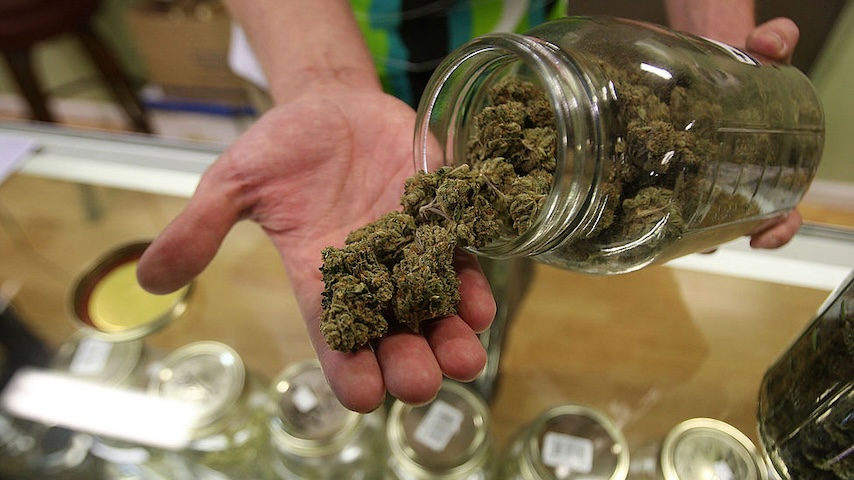Nearly Half of States Have Legalized Cannabis, and the Kids Are Still All Right
Photo by David McNew/Getty Images
Representative Brian Johnson, hailing from Cambridge in Minnesota’s house district 28A, was a firm “No” vote on HF100, the bill that would legalize recreational cannabis in the state. Like almost all of his GOP colleagues, he was doing it for the kids.
“It doesn’t start out with meth,” he said during the floor debate, referring to a frightening spiral into drug addiction, a scenario drilled into youth from time immemorial. “Doesn’t start out with fentanyl. Doesn’t start out with LSD or heroin. It generally starts with alcohol or marijuana. And what we found out a little bit ago from Representative Backer, it’s usually marijuana. If you’re concerned about our kids, vote no on this.”
“If we do not protect our next generation, then why are we here?” Representative Jeff Backer asked earlier in the session. He then compared a child’s first drag of a joint to their first bite of a sumptuous apple.
“As you continue to eat an apple it becomes more desirable, but then it gets to a point that it becomes less desirable…. But what happens is as you take marijuana more, just like that apple, it becomes less undesirable,” he rambled, confusingly.
Underlying Johnson and Backer’s arguments is a prediction that has appeared at every single debate over legalizing recreational marijuana in the United States: that doing so would lead to an explosion of youth using the psychoactive drug.
Twenty-four states have legalized recreational cannabis since Washington and Colorado were the first to do so in 2012, so we now have a fair amount of data on the subject. Are kids getting stoned at higher rates than ever before?
Quite the opposite, as a new study published in the journal Drug and Alcohol Dependence Reports suggests. Based on a nationally representative survey of 543,195 Americans aged 12 and older conducted between 2013 and 2022, cannabis use in the past 30 days amongst youth aged 12 to 17 has stagnated, falling slightly from 7.11% in 2013 to 6.32% in 2022.
A recent CDC report focusing on high schoolers mirrors the findings, revealing a decrease in the prevalence of cannabis use from 23% in 2013 to 17% in 2023.
Earlier this summer, researchers at Montana State University and San Diego State University published a study comparing youth cannabis use in states that had legalized cannabis and in states that had not. “Recreational marijuana law adoption was not associated with current marijuana use or frequent marijuana use,” they found. “After legalization, there was no evidence of an increase in marijuana use.”
But while kids have grown less interested in Mary Jane, their elders are increasingly smitten.
In 2013, 4.33% of adults aged 50 to 64 reported using cannabis, according to the new study. In 2022, the proportion had roughly tripled to 12.8 percent. Perhaps the opposing trends are causally linked? What’s cool with adults is often less so with kids.
The specter of stoned youth isn’t the only bogeyman argument employed against cannabis to fall flat as data has rolled in from recreational states. Legal cannabis hasn’t been a gateway drug to opioids. It hasn’t reduced traffic safety. It hasn’t increased violent crime. It hasn’t led to psychosis patients streaming frantically into hospitals.
Those opposed to recreational cannabis predicted that legalization would create a dystopia. Thus far, it hasn’t arrived.